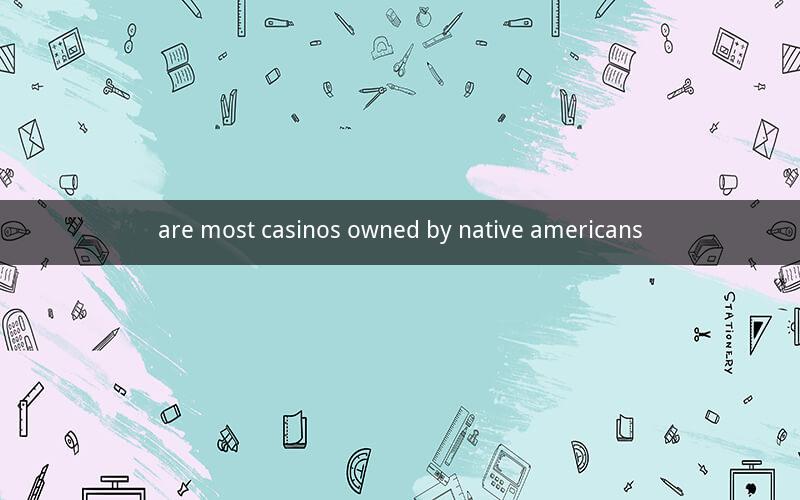
Table of Contents
1. Introduction to Native American Casinos
2. Historical Context of Native American Casinos
3. Legal Framework for Native American Casinos
4. Economic Impact of Native American Casinos
5. Social and Cultural Implications
6. Challenges Faced by Native American Casinos
7. Future Outlook for Native American Casinos
1. Introduction to Native American Casinos
Native American casinos, also known as tribal casinos, are gambling establishments operated by Native American tribes on their reservations. These casinos offer a variety of gaming options, including slot machines, poker, blackjack, and roulette. The concept of Native American casinos has gained significant popularity over the years, becoming a significant source of revenue for many tribes.
2. Historical Context of Native American Casinos
The history of Native American casinos dates back to the 1980s when the U.S. Supreme Court ruled in favor of tribes in the case of California v. Cabazon Band of Mission Indians. This decision allowed tribes to offer gambling on their reservations as long as it was not in violation of state law. Since then, the number of Native American casinos has grown exponentially, with many tribes embracing the opportunity to generate revenue and improve their communities.
3. Legal Framework for Native American Casinos
The legal framework for Native American casinos is complex and involves a combination of federal, state, and tribal laws. The Indian Gaming Regulatory Act (IGRA) of 1988 is the primary federal law governing Native American casinos. IGRA establishes a three-tiered regulatory system, allowing tribes to offer certain forms of gambling with the approval of their state governments.
4. Economic Impact of Native American Casinos
Native American casinos have had a significant economic impact on tribes and surrounding communities. The revenue generated from these casinos has been used to fund education, healthcare, and infrastructure projects. Additionally, Native American casinos have created thousands of jobs, providing employment opportunities for tribal members and non-members alike.
5. Social and Cultural Implications
The social and cultural implications of Native American casinos are multifaceted. While many tribes view casinos as a means to preserve their culture and improve their communities, others argue that casinos can lead to increased crime, addiction, and social problems. The debate over the social and cultural impact of Native American casinos continues to this day.
6. Challenges Faced by Native American Casinos
Native American casinos face numerous challenges, including competition from commercial casinos, regulatory scrutiny, and economic downturns. Additionally, tribes must navigate complex legal issues and ensure that their casinos comply with federal, state, and tribal laws. Despite these challenges, many Native American casinos have thrived and become a vital part of their communities.
7. Future Outlook for Native American Casinos
The future of Native American casinos appears to be promising. As tribes continue to innovate and adapt to changing market conditions, they will likely remain a significant source of revenue and cultural preservation. However, the ongoing debate over the social and cultural impact of Native American casinos will likely continue to shape the future of these establishments.
10 Questions and Answers
Question 1: How many Native American casinos are there in the United States?
Answer: There are over 500 Native American casinos in the United States, with the majority located on tribal reservations.
Question 2: What types of games are offered at Native American casinos?
Answer: Native American casinos offer a variety of games, including slot machines, poker, blackjack, roulette, and bingo.
Question 3: How do Native American casinos generate revenue?
Answer: Native American casinos generate revenue through the sale of gambling chips, food and beverage services, and other amenities.
Question 4: What is the Indian Gaming Regulatory Act (IGRA)?
Answer: The Indian Gaming Regulatory Act (IGRA) of 1988 is the primary federal law governing Native American casinos. It establishes a three-tiered regulatory system for tribes to offer certain forms of gambling.
Question 5: How have Native American casinos impacted the economy?
Answer: Native American casinos have had a significant economic impact on tribes and surrounding communities, creating jobs and funding education, healthcare, and infrastructure projects.
Question 6: What are some of the challenges faced by Native American casinos?
Answer: Native American casinos face challenges such as competition from commercial casinos, regulatory scrutiny, and economic downturns.
Question 7: How do Native American casinos contribute to cultural preservation?
Answer: Native American casinos provide a source of revenue that can be used to fund cultural programs, preserve historical sites, and support tribal traditions.
Question 8: What is the role of the National Indian Gaming Commission (NIGC) in regulating Native American casinos?
Answer: The National Indian Gaming Commission (NIGC) is an independent regulatory agency responsible for ensuring that tribes comply with federal laws and regulations governing Native American casinos.
Question 9: How do Native American casinos address social and cultural concerns?
Answer: Native American casinos address social and cultural concerns through various programs, including substance abuse treatment, counseling services, and cultural education initiatives.
Question 10: What is the future outlook for Native American casinos?
Answer: The future outlook for Native American casinos appears promising, as tribes continue to innovate and adapt to changing market conditions while addressing social and cultural concerns.